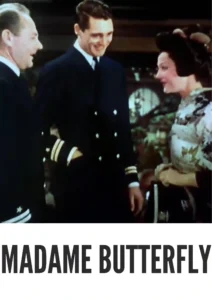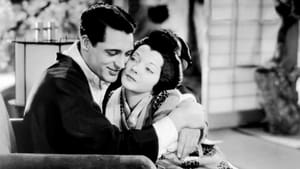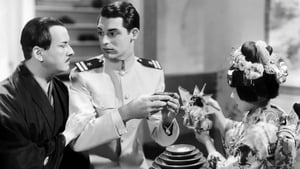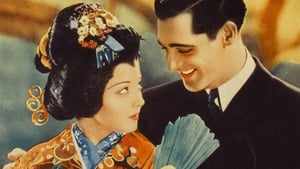Video Sources 0 Views
- Madame Butterfly 1932 Colorized


Download Madame Butterfly (1932) Colorized HD | Cary Grant | Exotic Musical Romance
Synopsis
Table of Contents
ToggleGeisha’s Love: Madame Butterfly (1932) in Radiant Color

Immerse yourself in the poignant world of Madame Butterfly, a 1932 musical romance, now exquisitely colorized to enrich your viewing pleasure. Starring Sylvia Sidney and Cary Grant, this film beautifully portrays a tale of love, sacrifice, and cultural clash set against a backdrop of exotic locales. Perfect for fans of classic romance and musical dramas, this HD download offers a timeless story revitalized for today’s audience.
Madame Butterfly Storyline: A Heartbreaking Tale of Devotion
Madame Butterfly tells the story of Cio-Cio San, a young Japanese geisha (played by Sylvia Sidney), who falls deeply in love with an American naval officer, Pinkerton (played by Cary Grant). Their fleeting romance leads to a marriage, but Pinkerton soon returns to America, promising to come back.Cio-Cio San faithfully waits for his return, clinging to the hope of their reunion. Years pass, and she raises their son alone, steadfast in her love and devotion. When Pinkerton finally returns with his American wife, Cio-Cio San’s world crumbles, leading to a tragic and heartbreaking climax. The film explores themes of cultural differences, unrequited love, and the sacrifices made in the name of love, making it a powerful and emotionally resonant story.
Movie Cast
The film features a talented cast of actors who bring this tragic love story to life:
- Sylvia Sidney as Cio-Cio San (Madame Butterfly)
- Cary Grant as Lt. Pinkerton
- Charles Ruggles as Goro
- Irving Pichel as Yamadori
- Edmund Breese as Sharpless
Movie Genre
Madame Butterfly falls into the genre of musical romance, blending elements of drama and tragedy to create a deeply moving cinematic experience. Its exotic setting and emotional depth make it a captivating and unforgettable film.
Historical Context: Early Sound Era and Hollywood Adaptations
Released in 1932, Madame Butterfly is an early sound era adaptation of the classic Giacomo Puccini opera and the original story. The film reflects the fascination with exotic cultures prevalent in Hollywood during this period. While not always culturally sensitive by today’s standards, it remains a significant example of early cinematic adaptations of popular operas and literary works. It also marks an early role for Cary Grant, showcasing his rising star power.
Colorization Details
This colorized version of Madame Butterfly has been carefully restored using state-of-the-art digital techniques, enhancing the visual experience while respecting the film’s original emotional tone. The colorization process involved a detailed analysis of the original black and white footage, with colors chosen to evoke the film’s setting and the characters’ emotions. The techniques used include advanced algorithms for color correction and image enhancement, ensuring a visually stunning presentation. While colorization can be a controversial topic, it introduces classic films to new audiences and preserves their legacy for future generations.
Technical Details
- Director: Marion Gering
- Screenplay: Josephine Lovett, Edwin Justus Mayer
- Based on: the opera Madama Butterfly by Giacomo Puccini and the story by John Luther Long and David Belasco
- Cinematography: David Abel
- Edited by: Jane Loring
- Production Company: Paramount Pictures
- Distributed by: Paramount Pictures
- Runtime: 88 minutes
Technical Specifications
- Download Format: MP4
- Resolution: HD (1080p)
- Compatibility: Compatible with most devices, including smartphones, tablets, computers, and smart TVs.
Reviews and Critical Reception
Madame Butterfly (1932) is celebrated for its emotional depth and the performances of its lead actors, particularly Sylvia Sidney. The film is a notable adaptation of the classic opera, bringing the tragic love story to a wider audience. While some critics have noted its cultural insensitivity by modern standards, it remains a significant work in the history of Hollywood adaptations and a testament to the enduring power of the original story. As a poignant and visually striking film, Madame Butterfly continues to resonate with audiences today.
FAQs
- Q: What is Madame Butterfly about?
- A: Madame Butterfly is a tragic love story about a Japanese geisha who falls in love with an American naval officer and faces heartbreak and betrayal.
- Q: Is Madame Butterfly (1932) a faithful adaptation of the opera?
- A: The film is based on the same source material as the opera and captures the essence of the tragic love story, though it takes some cinematic liberties.
- Q: Is this version of Madame Butterfly colorized?
- A: Yes, this version has been professionally colorized to enhance the viewing experience.
- Q: What makes Madame Butterfly interesting for classic film fans?
- A: Madame Butterfly offers a glimpse into early Hollywood’s adaptations of classic stories and features notable performances from Sylvia Sidney and Cary Grant.
- Q: What is the download format?
- A: The download format is MP4, which is compatible with most devices.
- Q: What resolution is the download?
- A: The resolution is HD (1080p), providing a high-quality viewing experience.
Download Now in HD!
Watch Madame Butterfly Today!













